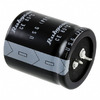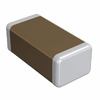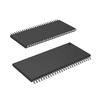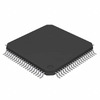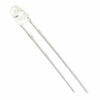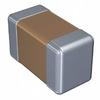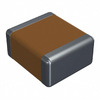XCF04SVOG20C: Alternatives, Pinout, and Datasheet
This article introduces Xilinx's Platform Flash series, featuring in-system programmable configuration PROMs ranging from 1 to 32 Mb. Designed to store FPGA configuration bitstreams effectively, these devices offer a versatile and economical solutions. The ability to smoothly integrate these PROMs into complex systems helps in meeting stringent project deadlines. This series presents various models, including both 3.3V and 1.8V options, tailored to support different operational modes and enhance system flexibility. The article further explores the detailed characteristics, applications, and design insights of these PROMs, emphasizing their adaptability and strategic importance in modern electronic design.Catalog
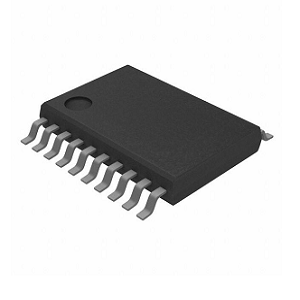
Overview of the XCF04SVOG20C
The Xilinx Platform Flash PROM series offers a flexible solution tailored for FPGA configuration. These PROMs, including the 3.3V XCFxxS variants, are accessible in capacities of 4 Mb, 2 Mb, and 1 Mb. They accommodate both Master Serial and Slave Serial configuration modes, fostering a dynamic approach in multi-mode systems where flexibility is desired. Conversely, the 1.8V XCFxxP PROMs, available in more substantial 32 MB, 16 MB, and 8 MB capacities, expand versatility through support for Master and Slave SelectMAP modes. This compatibility broadens the scope of application in FPGA implementations that necessitate higher storage without compromising mode adaptability.
Integrating these devices demands a reflective consideration of not just current configuration needs but also long-term potential for scalability and resilience. For example, in high-demand applications, PROMs compatible with Master Serial mode are frequently sought for their ease of use, while SelectMAP-compatible options are selected for their enhanced speed and broader data capacity. Supporting multiple configuration modes can greatly impact systems that require resilience, adaptability, and speedy transitions between evolving software and hardware requirements. Choosing between a 3.3V or 1.8V PROM type can deeply affect the performance and potential of a system. This decision must align with the specific technical objectives and future vision of a project, ensuring a path towards growth and adaptability in rapidly shifting technological environments.
XCF04SVOG20C Pin Configuration
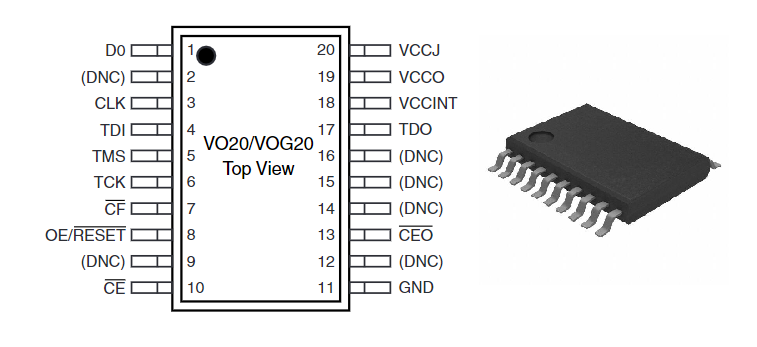
XCF04SVOG20C Symbol, Footprint, and CAD Model
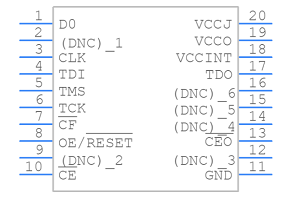
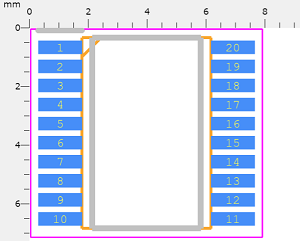

Features of XCF04SVOG20C
In-system Programming
The XCF04SVOG20C PROMs provide in-system programming that simplifies the setup process for Xilinx FPGAs. Utilizing a low-power CMOS NOR Flash process, they balance energy efficiency with strong performance, capable of withstanding up to 20,000 program/erase cycles , ideal for frequent updates without loss of reliability. Many often find these PROMs' longevity minimizes device replacement and maintenance, facilitating cost-effective lifecycle management. This durability not only prolongs device usability but also bolsters system reliability in applications like aerospace and industrial automation.
Temperature Range and Environmental Tolerance
Operating between -40°C and +85°C, XCF04SVOG20C PROMs demonstrate impressive performance across diverse environmental conditions. Their ability to function in such climates proves valuable for industries exposed to severe weather, including automotive and outdoor communication systems. Applications reveal that devices with wide temperature specifications offer enhanced flexibility and stability, which is good for tasks that demand continuous operation despite temperature variations.
Boundary-Scan Support via JTAG
By supporting boundary-scan testing through JTAG and aligning with IEEE standards 1149.1 and 1532, the XCF04SVOG20C PROMs streamline both diagnostics and development. JTAG boundary-scan provides comprehensive verification of connections and identifies pin-level faults, improving troubleshooting accuracy and efficiency. In practical scenarios, boundary-scan methods have become important in manufacturing and maintaining complex electronics, optimizing diagnostics and reducing costs for defect correction. These techniques are beneficial for validating new designs and facilitating in-field repairs.
FPGA Configuration via JTAG Command
FPGA configuration via JTAG commands offers a streamlined, efficient programming , beneficial in scenarios requiring swift adaptations. This method simplifies initial setups and proves effective in dynamic settings where quick reconfigurations are needed. Others emphasize the convenience and versatility of in-system FPGA configuration. For instance, in telecommunications infrastructure, the capacity for remote system reconfiguration minimizes downtime, allowing responsive resource management as network requirements shift. XCF04SVOG20C PROMs blend robust programmability, environmental resilience, and versatile testing capabilities, placing them at the forefront of advanced technological applications. These comprehensive features and dependability make them ideally suited for industries where high performance and reliability are required.
XCF04SVOG20C Technical Specifications
|
Type |
Parameter |
|
Factory Lead Time |
13 Weeks |
|
Mounting Type |
Surface Mount |
|
Number of Pins |
20 |
|
Published |
1999 |
|
Operating Temperature |
-40°C~85°C |
|
Pbfree Code |
yes |
|
Moisture Sensitivity Level (MSL) |
3 (168 Hours) |
|
ECCN Code |
EAR99 |
|
HTS Code |
8542.32.00.51 |
|
Terminal Position |
DUAL |
|
Peak Reflow Temperature (Cel) |
260 |
|
Supply Voltage |
3.3V |
|
Time@Peak Reflow Temperature-Max (s) |
30 |
|
Pin Count |
20 |
|
Package / Case |
20-TSSOP (0.173, 4.40mm Width) |
|
Mount |
Surface Mount |
|
Memory Types |
FLASH |
|
Packaging |
Tube |
|
JESD-609 Code |
e3 |
|
Part Status |
Active |
|
Number of Terminations |
20 |
|
Terminal Finish |
Matte Tin (Sn) |
|
Voltage - Supply |
3V~3.6V |
|
Terminal Form |
GULL WING |
|
Number of Functions |
1 |
|
Terminal Pitch |
0.65mm |
|
Base Part Number |
XCF$ |
|
Operating Supply Voltage |
3.3V |
|
Supply Voltage-Max (Vsup) |
3.6V |
|
Supply Voltage-Min (Vsup) |
3V |
|
Programmable Type |
In System Programmable |
|
Memory Size |
4Mb |
|
Organization |
4MX1 |
|
Memory Density |
4194304 bit |
|
Width |
4.39mm |
|
Height |
1.04mm |
|
Radiation Hardening |
No |
|
Lead Free |
Lead Free |
|
Interface |
Parallel, Serial |
|
Clock Frequency |
33MHz |
|
Standby Current-Max |
0.001A |
|
Data Retention Time-Min |
20 |
|
Length |
6.5mm |
|
RoHS Status |
ROHS3 Compliant |
|
REACH SVHC |
Unknown |
Alternatives of the XCF04SVOG20C
|
Part Number |
Manufacturer |
Package / Case |
Number of Pins |
Interface |
Memory Type |
Memory Size |
Supply Voltage |
Technology |
Terminal Position |
|
XCF02SVOG20C |
Xilinx Inc. |
20-TSSOP (0.173, 4.40mm Width) |
20 |
I2C, SPI, UART, USART |
- |
16 kB |
3.3 V |
CMOS |
DUAL |
|
STM32F030F4P6TR |
STMicroelectronics |
20-TSSOP (0.173, 4.40mm Width) |
20 |
I2C, SPI, UART, USART |
- |
16 kB |
3.3 V |
CMOS |
DUAL |
|
XCF01SVOG20C |
Xilinx Inc. |
20-TSSOP (0.173, 4.40mm Width) |
20 |
Parallel |
FLASH |
2Mb |
3.3 V |
CMOS |
DUAL |
|
STM32F030F4P6 |
STMicroelectronics |
20-TSSOP (0.173, 4.40mm Width) |
20 |
Parallel, Serial |
FLASH |
1Mb |
3.3 V |
CMOS |
DUAL |
Datasheet PDF
XCF04SVOG20C Datasheets:
XCF02SVOG20C Datasheets:
STM32F030F4P6TR Datasheets:
Mult Dev Inner Pkg Chg 30/Oct/2019.pdf
STM32F0zzz Programming Manual.pdf
STM32F030x4,6,8,C Datasheet.pdf
XCF01SVOG20C Datasheets:
STM32F030F4P6 Datasheets:
STM32F0zzz Programming Manual.pdf
About us
ALLELCO LIMITED
Read more
Quick inquiry
Please send an inquiry, we will respond immediately.
Frequently Asked Questions [FAQ]
1. How can one program the XCF04SVOG20C?
Programming the XCF04SVOG20C involves using dedicated software tools such as Xilinx iMPACT or Vivado. These sophisticated platforms streamline the complex process of designing logic circuits and compiling the essential bitstream. Once this is achieved, the next step is to program the device via a secure connection using a programming cable. The practical application of this method often proves highly effective in enhancing the XCF04SVOG20C’s functionality through precise and adaptable deployment. Sometimes emphasize iterative testing throughout the programming stages, which heightens the resilience and stability of the operational framework.
2. What are the typical applications of XCF04SVOG20C?
The XCF04SVOG20C is utilized across various industries such as consumer electronics, industrial systems, communication devices, and automotive sector. Its compact and versatile programmable logic solutions are highly prized, making it a favored choice among who value efficiency alongside robust performance. The device's small size enables it to integrate seamlessly into compact electronic designs, maintaining high functionality. Industry practices also demonstrate its capability in supporting both legacy systems and state-of-the-art applications. Adaptive technology drives innovation and caters to evolving demands, showcasing the XCF04SVOG20C's efficacy.

PC817 Optocoupler Guide: Pinout, Schematic, and EL817 Comparison
on November 5th

TC4420CPA: Pinout, Specifications, and Datasheet
on November 5th
Popular Posts
-

What is GND in the circuit?
on January 1th 2901
-

RJ-45 Connector Guide: RJ-45 Connector Color Codes, Wiring Schemes, R-J45 Applications, RJ-45 Datasheets
on January 1th 2471
-

Fiber Connector Types: SC Vs LC And LC Vs MTP
on January 1th 2061
-

Understanding Power Supply Voltages in Electronics VCC, VDD, VEE, VSS, and GND
on November 7th 1841
-

Comparison Between DB9 and RS232
on January 1th 1748
-

What Is An LR44 Battery?
Electricity, that ubiquitous force, quietly permeates every aspect of our daily lives, from trivial gadgets to life-threatening medical equipment, it plays a silent role. However, truly grasping this energy, especially how to store and efficiently output it, is no easy task. It is against this background that this article will focus on a type of coin cell battery that may seem insignificant on the...on January 1th 1699
-

Understanding the Fundamentals:Inductance Resistance, andCapacitance
In the intricate dance of electrical engineering, a trio of fundamental elements takes center stage: inductance, resistance, and capacitance. Each bears unique traits that dictate the dynamic rhythms of electronic circuits. Here, we embark on a journey to decipher the complexities of these components, to uncover their distinct roles and practical uses within the vast electrical orchestra. Inductan...on January 1th 1644
-

CR2430 Battery Comprehensive Guide: Specifications, Applications and Comparison to CR2032 Batteries
What is CR2430 battery ?Benefits of CR2430 BatteriesNormCR2430 Battery ApplicationsCR2430 EquivalentCR2430 VS CR2032Battery CR2430 SizeWhat to look for when buying the CR2430 and equivalentsData Sheet PDFFrequently Asked Questions Batteries are the heart of small electronic devices. Among the many types available, coin cells play a crucial role, commonly found in calculators, remote controls, and ...on January 1th 1523
-

What Is RF and Why Do We Use It?
Radio Frequency (RF) technology is a key part of modern wireless communication, enabling data transmission over long distances without physical connections. This article delves into the basics of RF, explaining how electromagnetic radiation (EMR) makes RF communication possible. We will explore the principles of EMR, the creation and control of RF signals, and their wide-ranging uses. The article ...on January 1th 1515
-

CR2450 vs CR2032: Can The Battery Be Used Instead?
Lithium manganese batteries do have some similarities with other lithium batteries. High energy density and long service life are the characteristics they have in common. This kind of battery has won the trust and favor of many consumers because of its unique safety. Expensive tech gadgets? Small appliances in our homes? Look around and you'll see them everywhere. Among these many lithium-manganes...on January 1th 1491

















